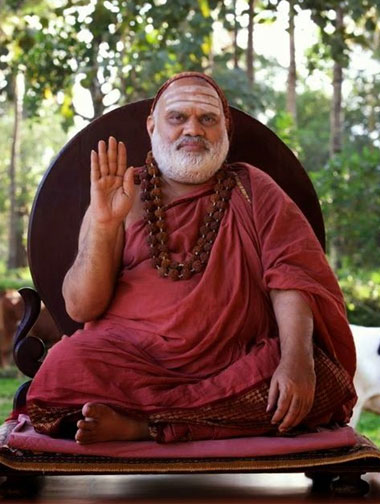- Plot No.92, Road No.72, Prashasan Nagar, Jubilee Hills, Hyderabad – 500096, Telangana, India.
- +91-63021 52736
- info@kumaraviharam.org
About Us
About Sri Sringeri Mutt
Jagadguru Shankaracharya Mahasamsthanam, Dakshinaya Sri Sharada Peetham, Sringeri is the first and foremost of the four Peethams established by the renowned 8th Century philosopher – Saint Sri Adi Shankara, the principal exponent of Advaita (non-dualism). The Divinity of Knowledge, Goddess Sharada, installed at Sringeri by Sri Adi Shankara, graces the Peetham as the presiding deity.
Kumaraswamy temple is all set to be built in the town of Srisailam under the aegis of Sringeri Mutt. This pristine place is located in Kurnool District of Andhra Pradesh. Close to Nallamalai Hills next to river Krishna, the town has been a famous pilgrimage site for years and has featured as the seat of religious, cultural, and social history of our great Nation. Pre-historic studies state that the habitational history of this town goes back 30,000 to 40,000 years in time!
Poised at an altitude of 476 meters above sea level this holy land has been stated as ‘Kailasha’ on earth according to Hindu mythology and named ‘Ila Kailasam’. Srisailam is said to be the abode of Lord Mallikarjuna and Goddess Brahmaramba Devi. The uniqueness of this place is the divine combination of Jyothirlingam and Shakti Peetam. In fact, the Skanda Purana proclaims that a mere glance of Srisaila Sikharam frees the human soul from the cycle of rebirth.
36th - Acharya

Jagadguru Shankaracharya Sri Sri Bharati Tirtha Mahaswamigal, the 36th Acharya in the illustrious and unbroken lineage of Acharyas presently adorns the throne of transcendental wisdom – the Vyakhyana Simhasana. This title is associated with the Pontifical Seat of the Peetham. The Jagadguru upholds the activities of the Peetham towards the propagation and sustenance of Sanatana Dharma while being a guide to thousands of disciples.
In 1966, he approached the then Sringeri Jagadguru Sri Sri Sri Abhinava Vidyatirtha Mahaswamiji as a bachelor at the age of 15 seeking his blessings and instructions in the shastras. The Sringeri Acharya was then observing chaturmasya at Ujjain. Sitarama Anjaneyulu (that was the Acharya’s name in his poorvashrama) had come with great vairagya growing in him.
Sitarama Anjaneyulu’s childhood is worth recalling in the context of his spiritual background. He was born into a Smartha family bearing the name “Tangirala”, of Apasthamba sutra, Krishna Yajur sakha, Kutsasa gotra, living in Alugumallepadu village in Palnadu area of Guntur, on the banks of river Naguleru. He was born on April 11, 1951 as a result of long prayers and vrata (fast) done by his father Sri Venkateshwara Avadhani and mother Srimati Ananthalakshmamma.
In our Indian tradition, a very high position has been accorded to the Guru. Without the grace of the Guru, no one can attain fulfilment of the purpose of life. We all desire Moksha, and the sole means to its attainment is Jnana (knowledge). The Veda says: “It is only by knowing the Supreme Brahman that one attains immortality. There is no other path”. How can that knowledge be obtained by us? Can it be got by perusal of texts? Well, this knowledge can be procured only from a Guru.
Governance
Guruseva Dhurina Padmashree Dr. V. R. Gowrishankar has been administering the Sringeri Math with its vast estate and properties, having more than one hundred and fifty branches throughout the country as per the directions of Jagadguru Shankaracharya of the Dakshinamnaya Sringeri Sharada Peetham. As the Administrator and the CEO of Sringeri Math, Dr. V. R. Gowrishankar has been spearheading and supporting many developmental and other activities in a wide array of fields.
In 2008, the Government of India announced the conferring of ‘Padmashri’ award, one of the highest civilian honours of the country, on the Administrator of the Peetham, Guru Seva Dhurina Sri V R Gowrishankar for his outstanding contributions in the field of social work and development of the Malnad region in general and Sringeri Mutt in particular.
Lord Kumaraswamy Temple
The proposed LORD KUMARA SWAMY TEMPLE project, undertaken by Sri Sringeri Mutt is a dream come true for devotees. The temple is a tribute to Vedic traditions and is being built with the noble aim of promoting Vedic Education. This grand-scale project has been envisioned as per existing customs and norms in the form of sculptures, engraved images, gopurams, and mandapas; and will prove to be a boon for ‘Saiva Kshetra’.


